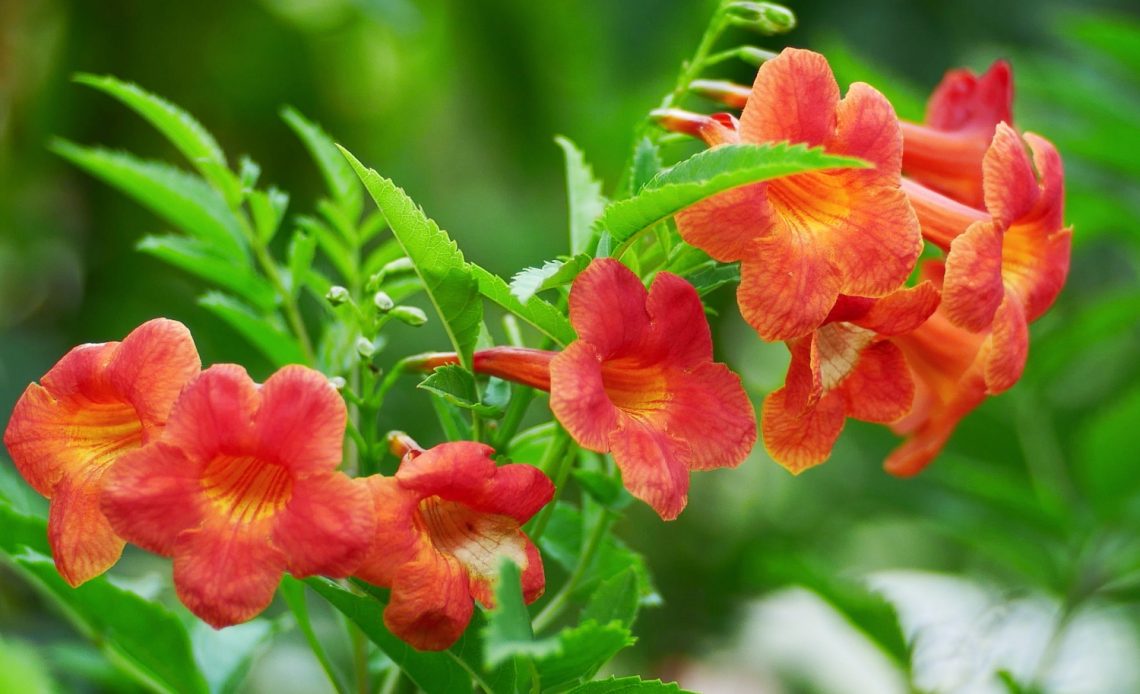

We’re here to help! Wild Yards is a completely free website that is 100% dedicated to helping you create a wildlife-friendly, sustainable yard. Read more
WildYards is reader-supported. When you buy a product through a link on our site, we may earn a comission. Every product is independently selected by our (obsessive) editors and our reviews are unbiased and objective. Read more about our mission or our privacy policy.
Growing a garden in your backyard is one of the most eco-friendly things you can do. Planting flowers and fruits provides local wildlife with a reliable food source and plenty of places to find shelter. Of course, some plants are better for the environment than others, it all depends on your growing region. So if you’re planning on starting a garden just to go green, here are 6 types of eco-friendly plants that you can grow in your backyard.
Wildflowers, fruit-bearing trees, and climbing plants that are native to your ecoregion are excellent choices, as they support local pollinators. Shrubs, shade trees, and grasses work to control erosion while offering shelter and food to local wildlife.
6 Types of eco-friendly plants for your backyard
Truth be told, there is no definitive list of the world’s most eco-friendly plants. The plants that will benefit the environment the most vary from ecosystem to ecosystem. No two regions are exactly alike!
So when planning a garden, it’s important to first understand your ecoregion and the types of native plants that thrive there. Growing native plants supports your ecoregion like nothing else.
When you plant more of the flowers, shrubs, and trees that spring up naturally in your local ecosystem, you’re facilitating nature. What could be more eco-friendly than that?
Creating a garden that supports the natural world around you is a worthy endeavor, but you may be feeling lost as to where to begin. So to help you get started, here are 6 types of eco-friendly plants to include in your backyard.
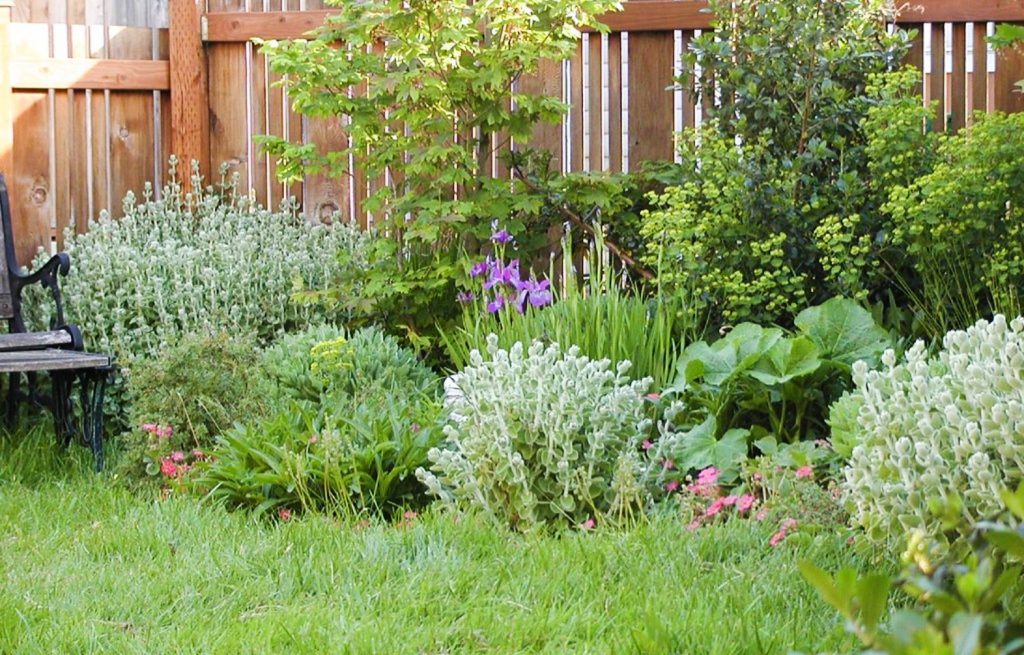
Wildflowers
The flowers that you see growing along the highway on your way to work or the grocery store? The ones growing at the park and along nearby nature trails? Those are the ones you need in your garden.
If you want to create a garden that supports your local ecosystem, choose flowers that spring up on their own within the ecosystem.
Black-eyed Susans, winecups, thistles, wild violet, coreopsis, and dandelions — the flowers that deserve a spot in your garden are the ones that you see growing in places where nobody takes care of them. Your local pollinators enjoy visiting these local plants best, so give them what they want!
For best results, choose at least 3 to 5 different types of wildflowers. Bees, butterflies, and other pollinating insects love to browse through different types of flowers. The more flowers you have around, the more of these bugs you’re likely to see.
Wildflowers are low-maintenance. Since they grow in your ecoregion naturally, they require very little additional care.
You can plant wildflowers in large flower beds, or even window boxes if you’re short on space. Some homeowners scatter wildflower seeds on their lawns in place of grass. It’s a great way to bring more pollinators to your yard. Plus, you can save time and money, and reduce your carbon footprint, because you won’t have to mow as often.
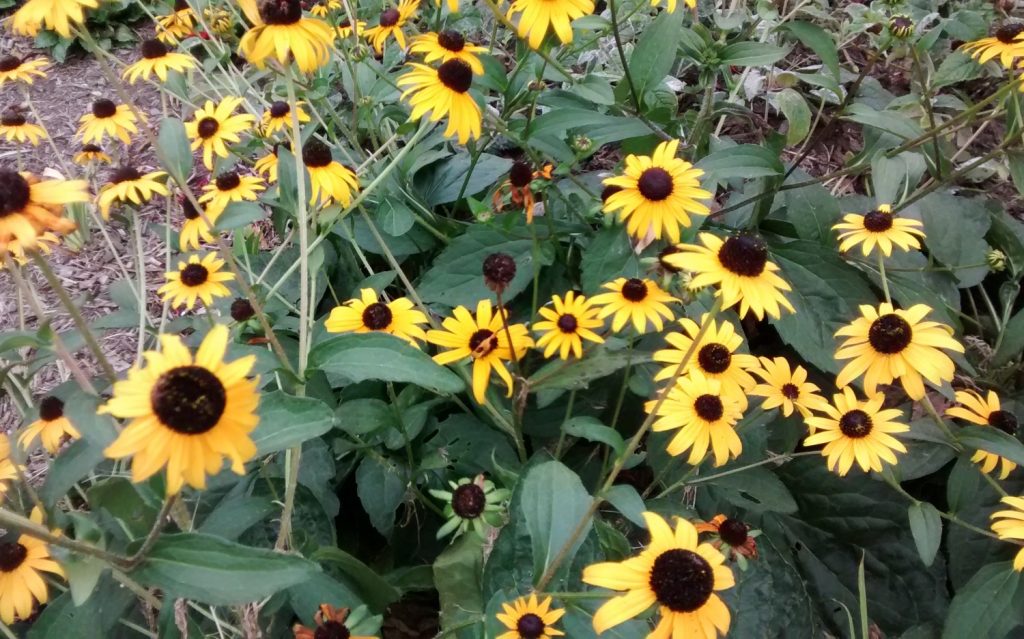
Shade trees
Every backyard needs a few shade trees. Even if your backyard is covered in mature trees, it’s important to continue planting more so that, as the older trees age out, there are new trees to take their place.
Trees are a major help when it comes to erosion control. Their extensive root systems help hold everything in place. Of course, trees are excellent air filters and oxygen producers, too!
Planting native shade trees is a great way to make your local wildlife feel more at home in your backyard. Trees provide squirrels with shelter, and give birds a place to build their nests and raise their babies.
Just be sure to keep your shade trees trimmed back so the limbs don’t reach over your roof. That just makes it easier for squirrels to chew their way into your attic in the winter. Trust us, we learned the hard way!
Plant a mixture of hardwoods and softwoods. Hardwoods like oaks and hickory trees, tend to be slow-growing. However, they also tend to live longer. Softwoods like pines and spruce trees, grow much more quickly, but they also don’t live as long by comparison.
Fast-growing softwoods mature quickly, providing your local wildlife with shelter while your slower-growing hardwoods are still getting established. For best results, choose a minimum of 3 to 4 different varieties of shade trees.
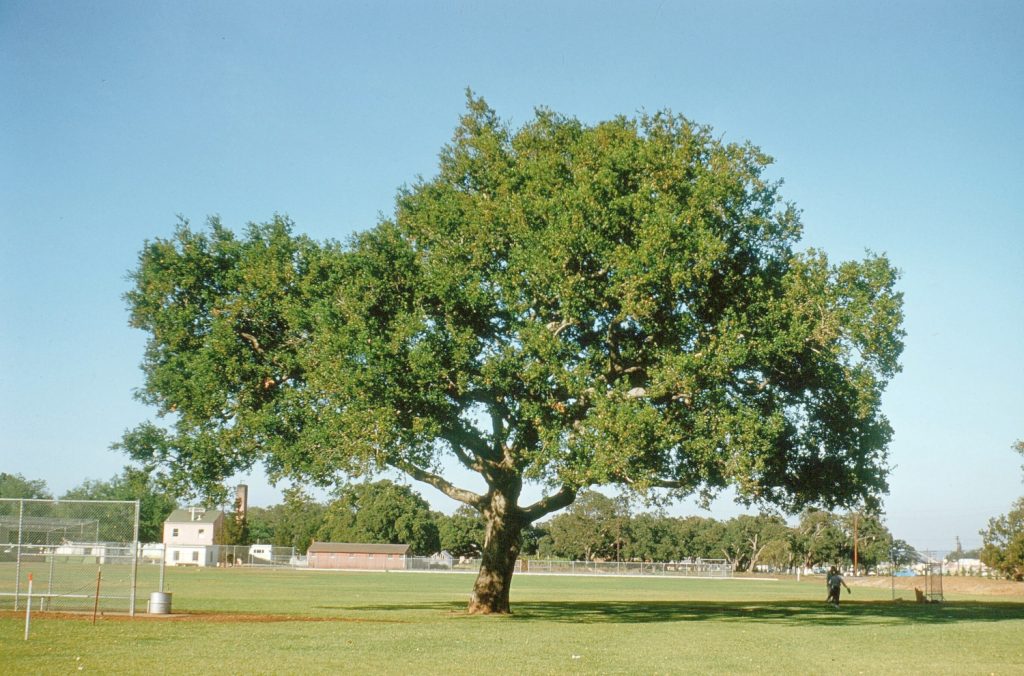
Fruit-bearing trees
In addition to planting shade trees, growing a few fruit-bearing trees is also a great way to support your local ecosystem.
Dewberry trees and hackberry trees are good choices. These trees produce shade and sweet fruits that squirrels, birds, and deer can’t resist
Look for crabapple trees, osage orange trees, and hawthorn trees, too. Be sure to choose native varieties, as these are more likely to survive conditions in your ecoregion.
If you have a large backyard with plenty of room, plant 3 to 5 fruit trees to support your local critters. Of course, you can always plant more if you want. Animals will welcome the ready food source.
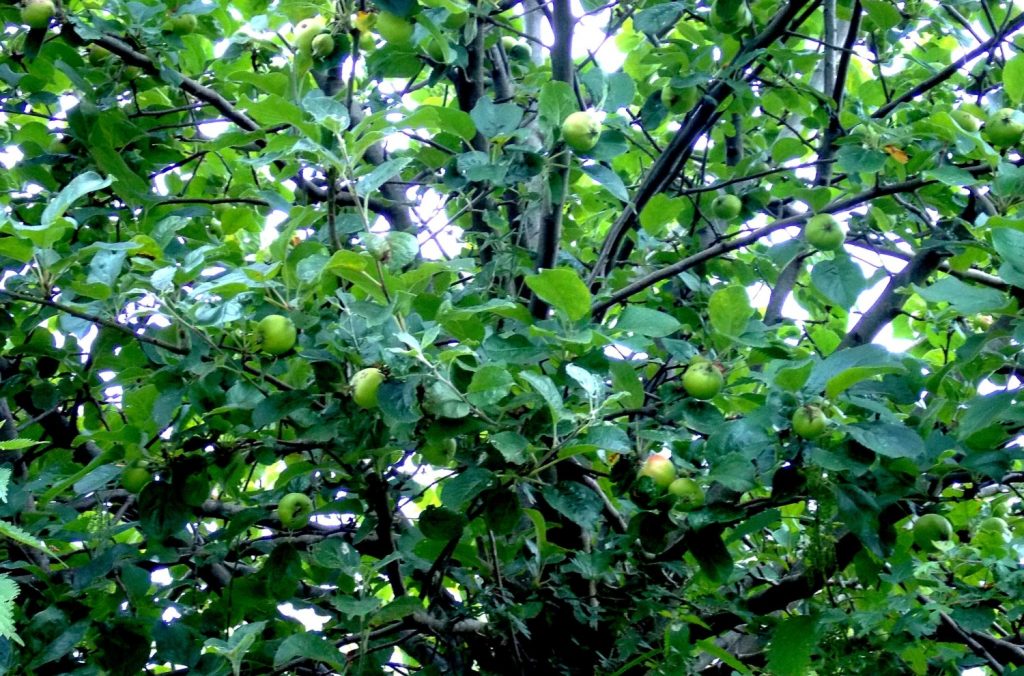
Non-invasive shrubs
Non-invasive shrubs, like spice berries, beauty berries, elderberries, and yaupon are terrific choices for your eco-friendly backyard garden.
Like fruiting trees, these shrubs produce fruits that birds enjoy browsing on.
Cardinals, robins, and waxwings are particularly fond of snacking on the berries that these non-invasive shrubs provide. Of course, non-invasive shrubs are also an excellent place for birds to hide and build their nests.
Grow tall woody shrubs, like yaupon, as a privacy hedge along your fenceline, and plant smaller shrubs, like beauty berries, in flower beds alongside wildflowers to add height and depth to the space.
For best results, plant 2 to 4 different types of shrubs. Choosing non-invasive shrubs is best. Invasive species pose a significant threat to native species, competing for space and nutrients.
Even though invasive plants may be easier to grow, they have a downside. Non-invasive plants are often a better source of nectar and food for wildlife than invasive ones. So be sure to choose non-invasive shrubs when filling your eco-friendly garden.
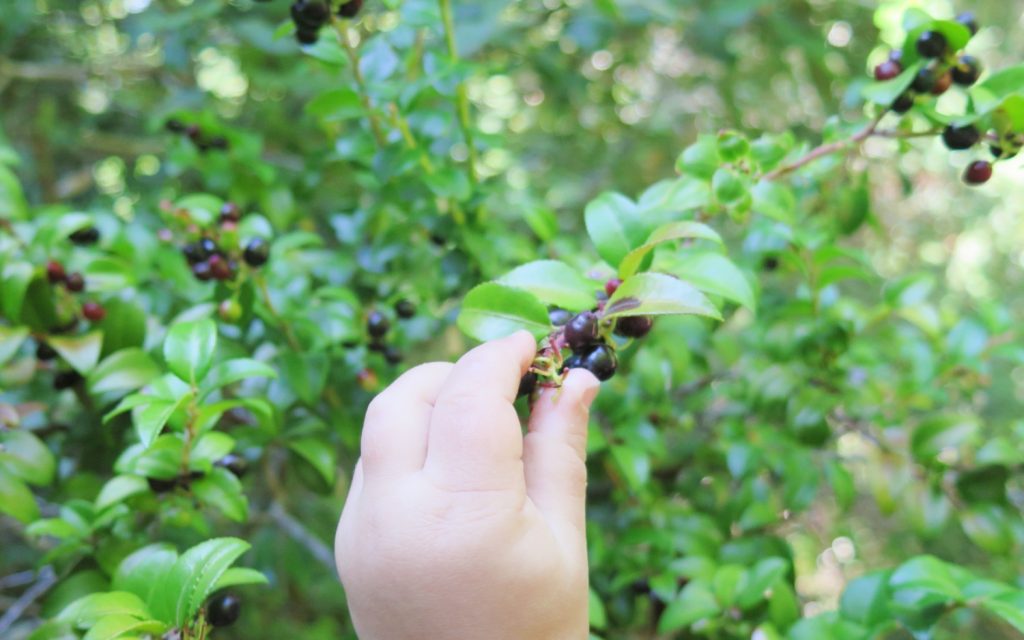
Native grasses
Native grasses are highly beneficial to the ecosystem because they provide local animals with shelter and nesting materials that they rely on to raise their families.
For lowland or marshy areas, choose cattails, sedges, and sweet flags. These grasses thrive in wet, boggy areas, and they give birds, frogs, and snakes a place to hide, and deer something to nibble on.
Native grasses are also critical for southwest landscapes. Muhly grass, buffalo grass, and wild ryegrass thrive in dry, arid conditions. Keeping these ornamental grasses in your garden provides desert animals with forage and shelter.
For hot, dry landscapes, consider using a mix of ornamental grasses and native wildflowers in your flower beds. This will help cut down on your water usage.
For more temperate climates, plant 1 to 3 different types of ornamental grasses in your garden to provide local wildlife with nesting sites and nesting materials.
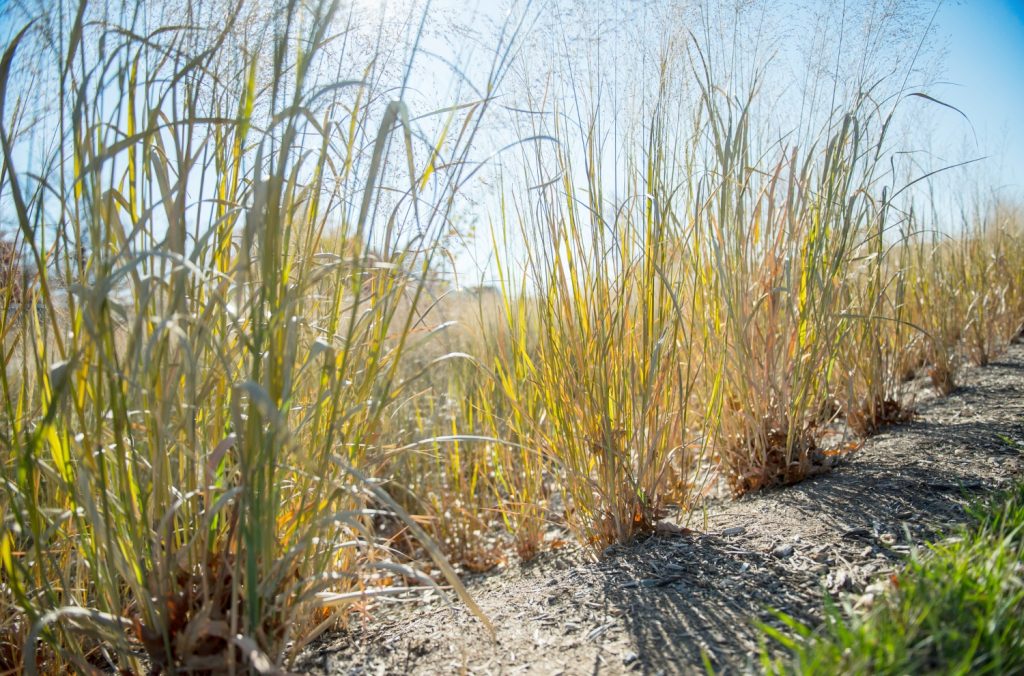
Climbing plants
You’ve got your wildflowers, your grove of trees, your shrubs, and your native grasses. So, what’s missing? Climbing plants!
Trumpet vine, wild grapes, passion vine, and honeysuckle are just a few climbing plants that your local wildlife will love.
These vines provide insects and hummingbirds with a great source of nectar. Plus, the flowers give way to fruits that birds, deer, raccoons, squirrels, and other critters will enjoy.
Of course, you don’t have to grow flowering and fruiting vines exclusively. Your ecosystem will also benefit from vining plants that are traditionally known for their foliage.
Ivy is a popular choice thanks to its classic good looks. Vines produce tons of oxygen. They also provide insects and birds with a good place to hide away from predators.
Virginia Creeper is another popular choice, especially in the South. But, be careful! This plant can cause certain people to break out in a terrible rash (and it’s every bit as itchy as the rash caused by poison ivy!).
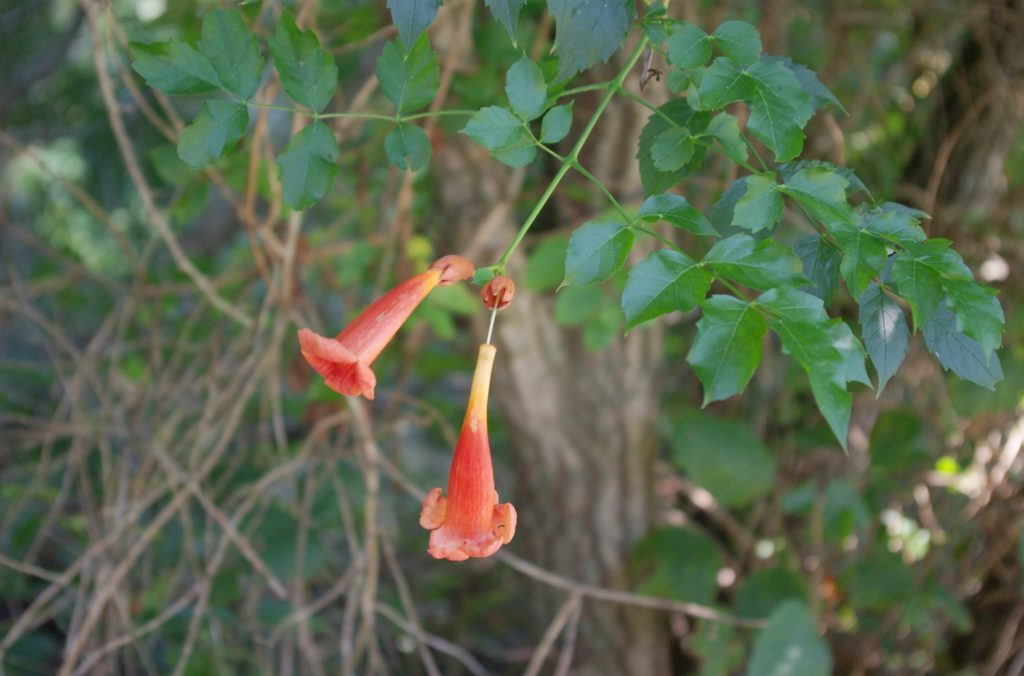
Tips for keeping your garden eco-friendly
Choosing native species for your garden is an excellent start, and planting an assortment of native flowers, trees, shrubs, vines, and grasses is even better! But there are a few other things that you can do to make your garden more environmentally friendly.
Here are a few easy tips to keep in mind when planning your garden so it will benefit your ecosystem even more.
Cut out chemicals
If you’re still using chemical-based fertilizers, pesticides, and herbicides in your garden, get rid of them.
These products are dangerous for pollinators, plus, they introduce harmful pollutants into the soil and local waterways.
Choose organic fertilizers that enrich the soil by feeding beneficial bacteria. Natural homemade insecticides are also preferable to chemical-based store-bought products.
As for herbicides, there are plenty of ways to deal with weeds without having to rely on Round-Up.
Use boiling water or a weed torch to spot-treat weeds in your flower beds. For large spaces, smother the weeds with a thick layer of hay or mulch, or simply cover them with a tarp for a few months before prepping your beds for planting.
Amend your soil
Plants rely on three nutrients the most to survive: nitrogen, phosphorus, and potassium. They need these three elements in higher doses than anything else in order to produce foliage, flowers, and fruits, and to survive stressful conditions.
But, in addition to these three essential nutrients, plants also rely on a whole spectrum of trace minerals to stay healthy.
Before planting, examine your soil. Is it sandy and loose, or clay-based and compacted? Does it drain well, or does it does it retain too much water?
Identify the basic properties of your soil, then use amendments, like manure, compost, feather meal, and blood meal to improve its texture and nutritional profile.
Creating an ideal environment for your native plants by enriching your soil with organic materials will help them get established more quickly.
Be sure to test your soil annually, and reapply organic fertilizers as needed to ensure your native plants continue growing their best.
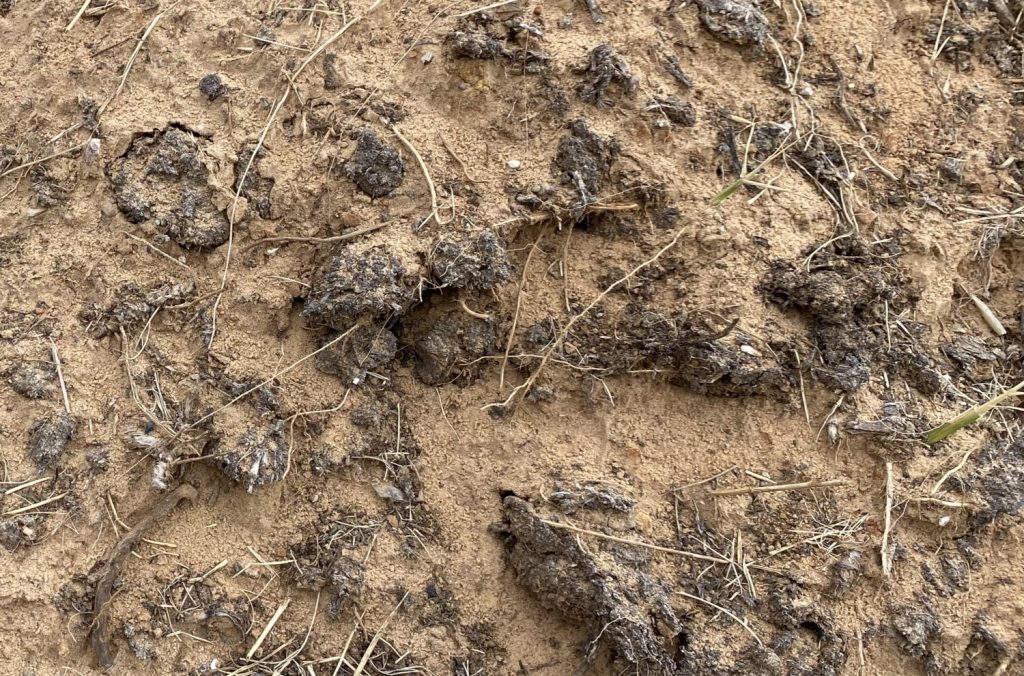
Choose organic mulch or living mulch
Mulch makes caring for your garden so much easier. Even though rubber mulch and other synthetic mulches last longer than organic materials, they can leach chemicals into the soil.
Furthermore, the fact that organic mulches break down over time is actually a good thing!
As wood chips, straw, cardboard, and shredded paper degrade, they add structure to the soil, keeping it loose so plants can root into it easily. These materials improve drainage, moisture retention, and aeration.
A better alternative to organic mulch would be living mulch. Use ground covers, like mint or thyme, to protect the soil surface from sunlight and seal in moisture.
As these plants shed their leaves and produce new growth, the old foliage makes its way back into the soil, replacing lost nutrients and providing the other plants in your flower beds with a good source of nutrients.
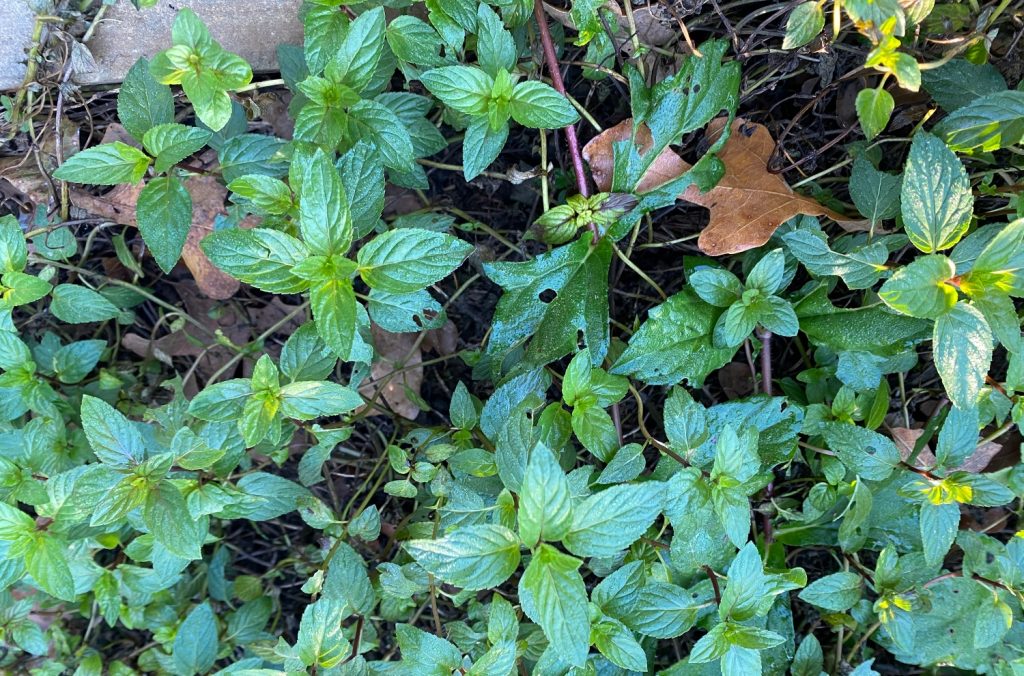
Alternate plant height to mimic nature
Take a look at the untouched areas of your local landscape. What do you notice? Upon closer inspection, you’ll see a variety of plant species. But you’ll also likely see significant variation in plant height.
When landscaping your backyard, plant low-growing plants, like wildflowers and native grasses around shrubs, and shrubs around trees, to imitate the way things grow in your ecoregion.
This strategy will not only add visual interest to your garden, but it’s also more likely to encourage wildlife to explore your backyard simply because it mimics nature.
It’s worth noting, too, that staggering plant heights within a given space supports plant growth.
Keeping shrubs, grasses, wildflowers, and trees all in the same area creates a symbiotic situation. As the trees grow, they provide shade for the shrubs. The shrubs fill in and protect the wildflowers and grasses, which act as a living mulch for the shrubs and trees so they stay hydrated.
At a certain point, usually after 10 years or so, a garden that has been planted in this way becomes largely self-sustaining.
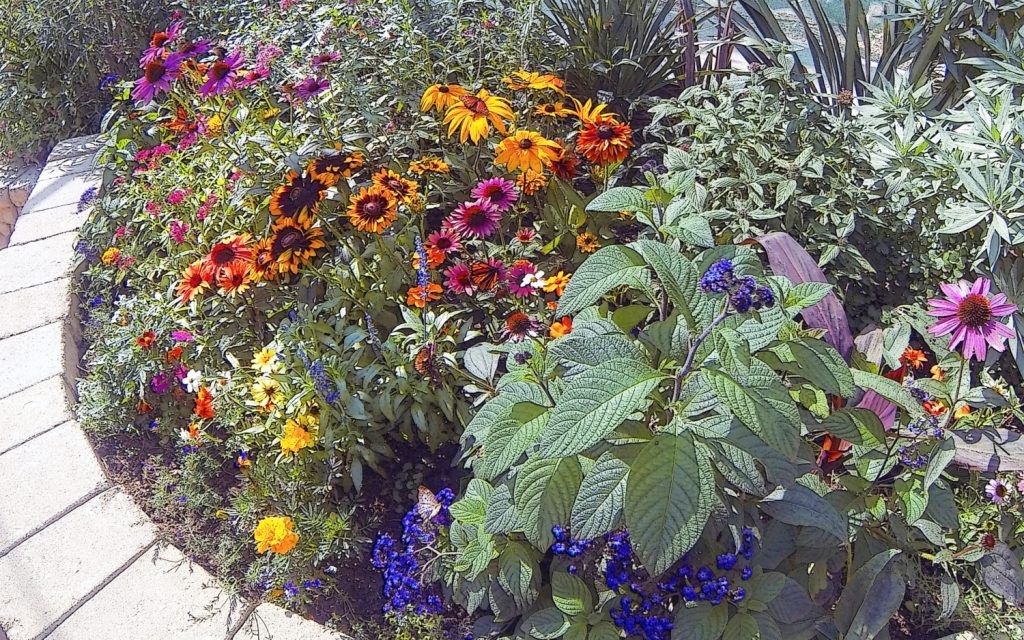
Creating an eco-friendly garden is easy
Gardening is one of the best things you can do for your ecosystem. Planting in a way that imitates nature will make gardening much easier for you, and the animals and insects in your region will love it all the more.
By observing nature and using the patterns you see to your advantage, you can turn your backyard into a wild yard that will benefit the ecosystem by supporting your local flora and fauna.
